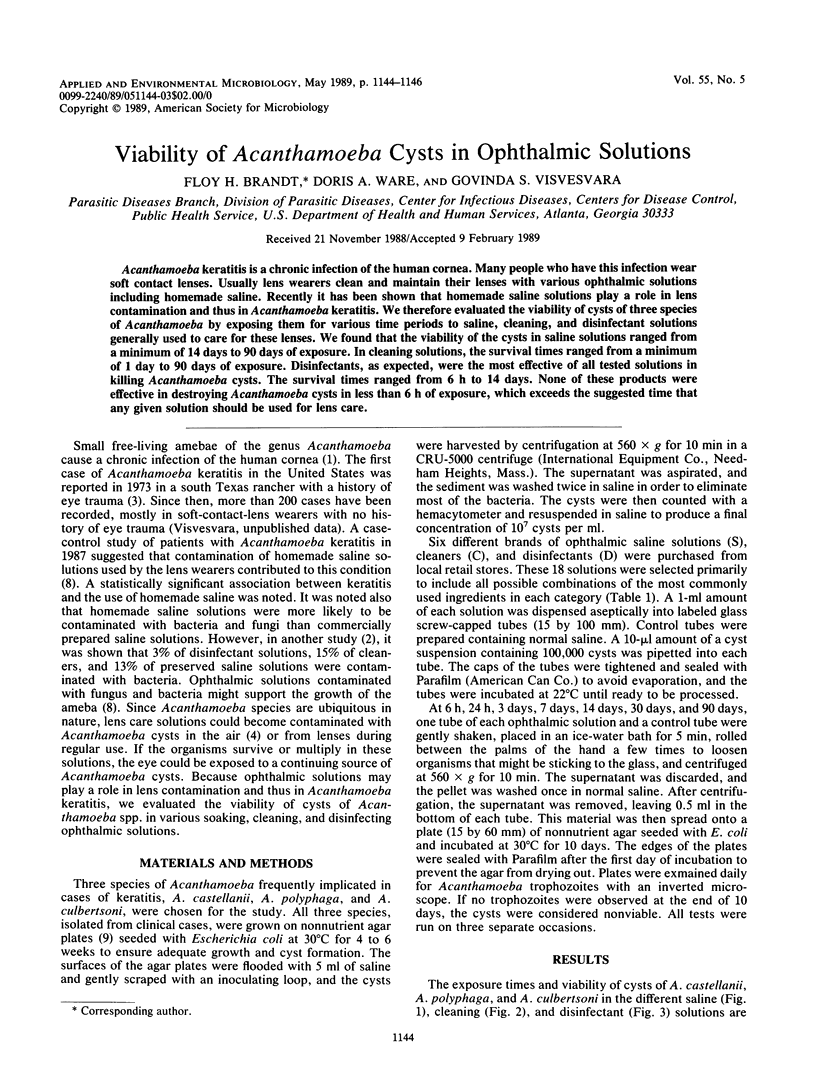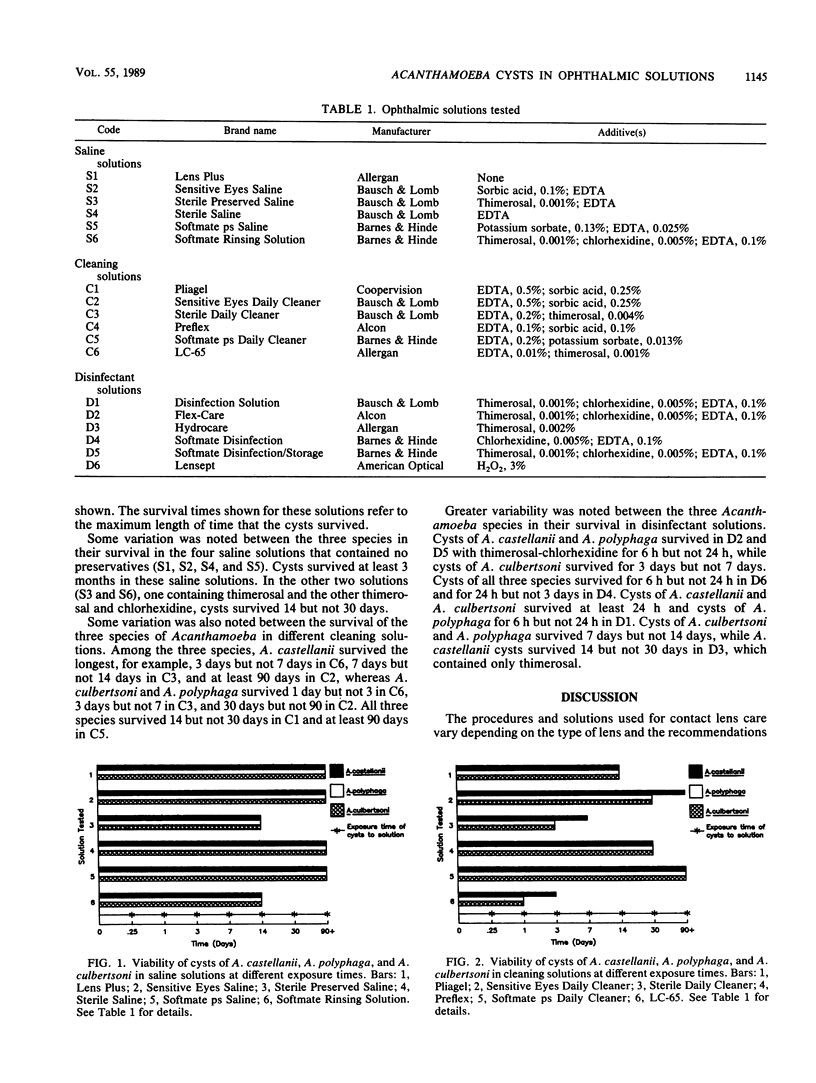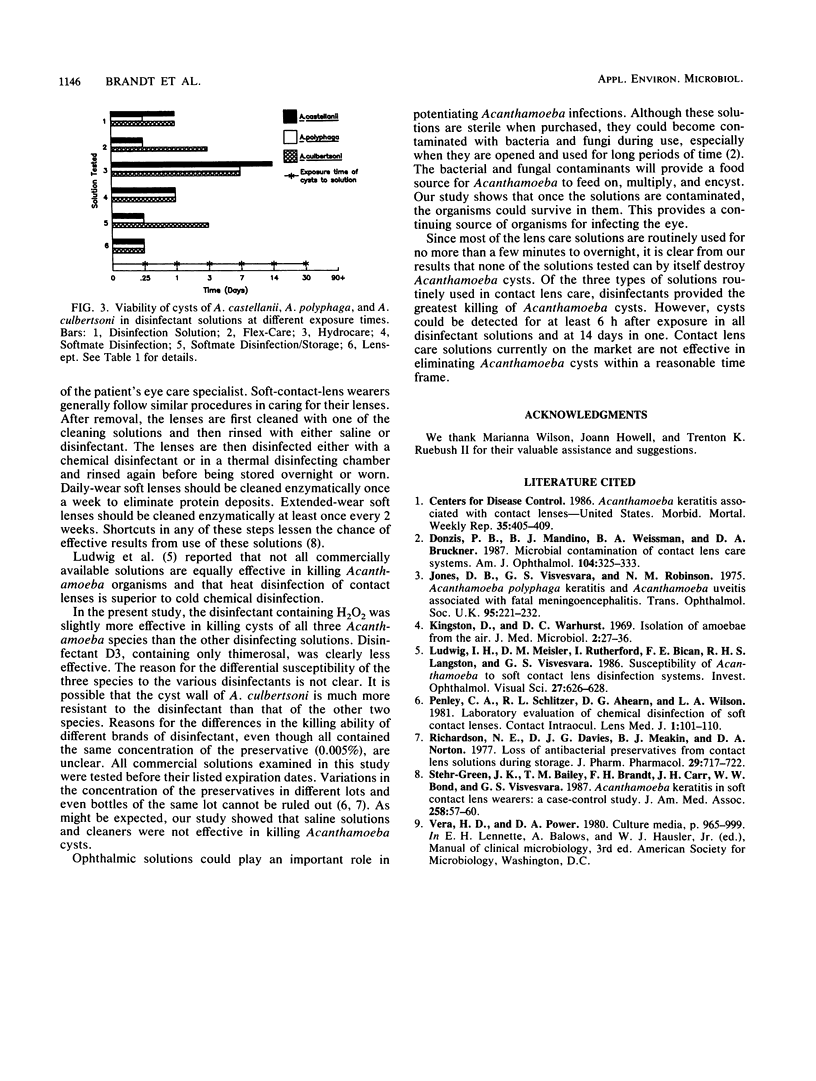Abstract
Acanthamoeba keratitis is a chronic infection of the human cornea. Many people who have this infection wear soft contact lenses. Usually lens wearers clean and maintain their lenses with various ophthalmic solutions including homemade saline. Recently it has been shown that homemade saline solutions play a role in lens contamination and thus in Acanthamoeba keratitis. We therefore evaluated the viability of cysts of three species of Acanthamoeba by exposing them for various time periods to saline, cleaning, and disinfectant solutions generally used to care for these lenses. We found that the viability of the cysts in saline solutions ranged from a minimum of 14 days to 90 days of exposure. In cleaning solutions, the survival times ranged from a minimum of 1 day to 90 days of exposure. Disinfectants, as expected, were the most effective of all tested solutions in killing Acanthamoeba cysts. The survival times ranged from 6 h to 14 days. None of these products were effective in destroying Acanthamoeba cysts in less than 6 h of exposure, which exceeds the suggested time that any given solution should be used for lens care.
Full text
PDF


Selected References
These references are in PubMed. This may not be the complete list of references from this article.
- Donzis P. B., Mondino B. J., Weissman B. A., Bruckner D. A. Microbial contamination of contact lens care systems. Am J Ophthalmol. 1987 Oct 15;104(4):325–333. doi: 10.1016/0002-9394(87)90219-4. [DOI] [PubMed] [Google Scholar]
- Jones D. B., Visvesvara G. S., Robinson N. M. Acanthamoeba polyphaga keratitis and Acenthamoeba uveitis associated with fatal meningoencephalitis. Trans Ophthalmol Soc U K. 1975 Jul;95(2):221–232. [PubMed] [Google Scholar]
- Kingston D., Warhurst D. C. Isolation of amoebae from the air. J Med Microbiol. 1969 Feb;2(1):27–36. doi: 10.1099/00222615-2-1-27. [DOI] [PubMed] [Google Scholar]
- Ludwig I. H., Meisler D. M., Rutherford I., Bican F. E., Langston R. H., Visvesvara G. S. Susceptibility of Acanthamoeba to soft contact lens disinfection systems. Invest Ophthalmol Vis Sci. 1986 Apr;27(4):626–628. [PubMed] [Google Scholar]
- Penley C. A., Schlitzer R. L., Ahearn D. G., Wilson L. A. Laboratory evaluation of chemical disinfection of soft contact lenses. Contact Intraocul Lens Med J. 1981 Apr-Jun;7(2):101–110. [PubMed] [Google Scholar]
- Richardson N. E., Davies D. J., Meakin B. J., Norton D. A. Loss of antibacterial preservatives from contact lens solutions during storage. J Pharm Pharmacol. 1977 Dec;29(12):717–722. doi: 10.1111/j.2042-7158.1977.tb11448.x. [DOI] [PubMed] [Google Scholar]
- Stehr-Green J. K., Bailey T. M., Brandt F. H., Carr J. H., Bond W. W., Visvesvara G. S. Acanthamoeba keratitis in soft contact lens wearers. A case-control study. JAMA. 1987 Jul 3;258(1):57–60. [PubMed] [Google Scholar]


